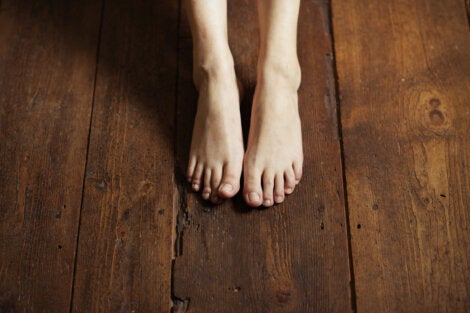Grounding Techniques to Reduce Anxiety

Grounding techniques are very simple relaxation exercises. They’re especially good if you’re dealing with a lot of stress or anxiety. As the name suggests, the exercise involves connecting with the Earth in a literal and figurative way.
This method helps reduce tension, but it can also be appropriate during times when you’re experiencing confusion, fear, or sadness and there’s no obvious event, such as danger or loss, to explain the emotions.
A study conducted by researchers at the University of California supports the benefits of grounding. From a physical perspective, earthing reduces inflammation, boosts the immune system, and improves a sense of vitality and wellness. Sounds pretty great, right? Without further ado, let’s see what it’s all about.
“There’s a center of quietness within, which has to be known and held. If you lose that center, you are in tension and begin to fall apart. The Center doesn’t have a location, yet, there are physical regions associated it.”
-Joseph Campbell-

The classic grounding exercise
It’s important to mention that there are different versions of grounding, but the “original” involves a direct encounter with nature. If you feel more at peace when you’re walking along the beach or through the forest, you’re spontaneously earthing. Earthing, or grounding, isn’t a mysterious ritual with complicated rules. It’s all about immersing yourself in natural surroundings.
To do this simple exercise, start by taking off your socks and shoes. Then, walk somewhere that has grass, sand, or rocks. It’s obviously important to make sure you’re not walking somewhere where you could hurt your feet.
All you have to do is walk without stopping for ten minutes. Focus on the sensations you’re experiencing in the soles of your feet. Try to breathe slowly. Ideally, do this exercise outdoors, as that provides the most benefits.
What are the benefits of this simple practice? According to studies on the subject, the direct contact of your skin on the earth is relaxing. In addition, walking along an uneven surface is a kind of natural massage. Proponents believe that this exercise helps you return to your center.
Alternative grounding techniques
As we mentioned above, there’s more than one version of this exercise. Another popular one is sort of the “mindfulness version”. It also involves being barefoot, but here you start by sitting in a chair somewhere where you can have your feet firmly planted on the ground. Start to breathe normally. Little by little, deepen your inhalation and exhalation.
After a few minutes in this position, when you feel your breathing is deep and even, focus all your attention on the soles of your feet. Try to notice all of the sensations: the texture of the floor, the temperature of your feet, etc.
Three minutes of being mindful of your feet and your breathing is enough. Bringing all of that focus and concentration to your feet plants you firmly in the here and now. It’s as if you inserted a parenthesis in your anxiety and gave yourself the opportunity to take a break for a moment. This practice may be short, but you’ll feel much better afterward.

A third variation
There’s another version of grounding that also involves mindfulness. Many people call it the 5-4-3-2-1 grounding technique. It’s a simple exercise that’s perfect for when you feel overwhelmed or out of control.
Start by taking a few deep breaths. Then, name five things you can see around you. It could be anything, there are no wrong answers. Next, close your eyes and acknowledge four things you can touch around you. Then, acknowledge three things you can hear, two things you can smell, and one thing you can taste. Take your time with each one. That’s it!
This mini-therapy session is perfect to bring you back down to Earth and the present moment. Anxiety happens when your mind projects into a future that it perceives to be threatening. This practice, and others like it, bring you back to the moment and dispel uneasiness and a racing mind.
As you can see, all three grounding techniques are very simple. Consequently, you can do them anywhere, whenever you need to relax. None of them take very long, but they can make a world of difference in your mood. Try one today!
All cited sources were thoroughly reviewed by our team to ensure their quality, reliability, currency, and validity. The bibliography of this article was considered reliable and of academic or scientific accuracy.
Figueras, T. (2013). Grounding: concepto y usos en danza movimiento terapia (DMT)
This text is provided for informational purposes only and does not replace consultation with a professional. If in doubt, consult your specialist.








